Birds are remarkable architects, creating intricate and breathtaking nests. In this article, we explore 11 species that showcase their incredible nest-building skills with unique designs and materials.
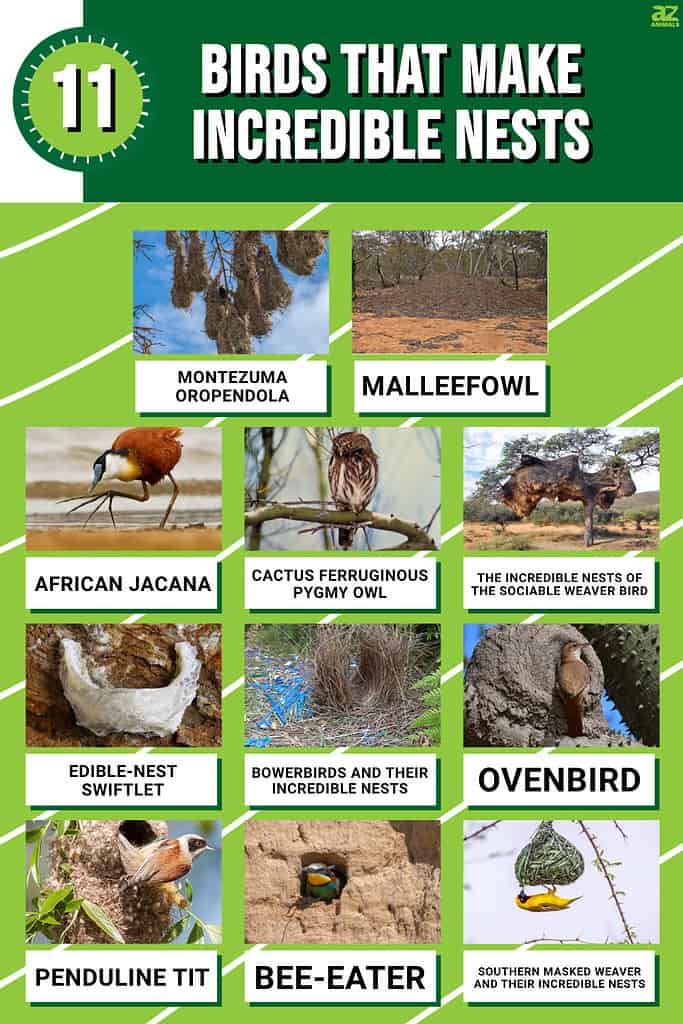
1. Montezuma Oropendola
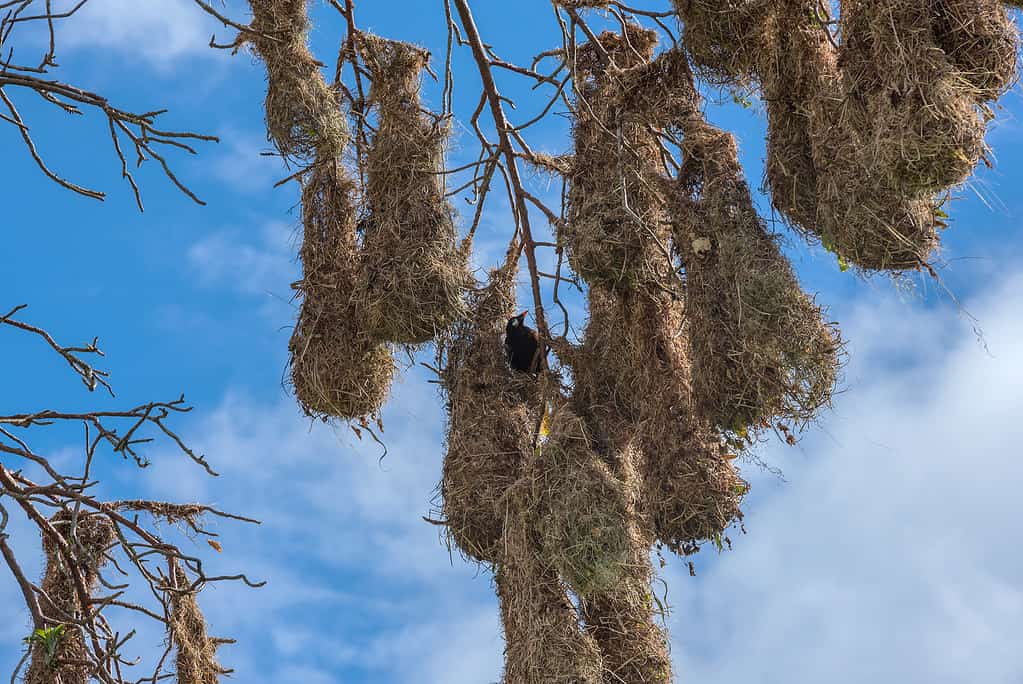
The incredible nests of the Montezuma oropendola are a sight to behold in Costa Rica.
©Rainer Lesniewski/iStock via Getty Images
The Montezuma oropendola (Psarocolius montezuma) is a large black and yellow bird from Central and South America that lives in the canopy of tropical rainforests. This species builds impressive nests, which are pendulum-shaped baskets made out of fibers woven together by the birds themselves.
These nests are usually suspended from thin branches near the top of tall trees, allowing them to take advantage of thermal updrafts while also providing protection from predators. The nests are typically around three feet in length and can house up to twenty birds at a time. Interestingly, the male Montezuma oropendola is responsible for nest-building, while the female builds a smaller inner chamber used for raising chicks. This species also reuse their nests year after year, making them some of the longest-lasting structures built by any bird species.
2. Malleefowl
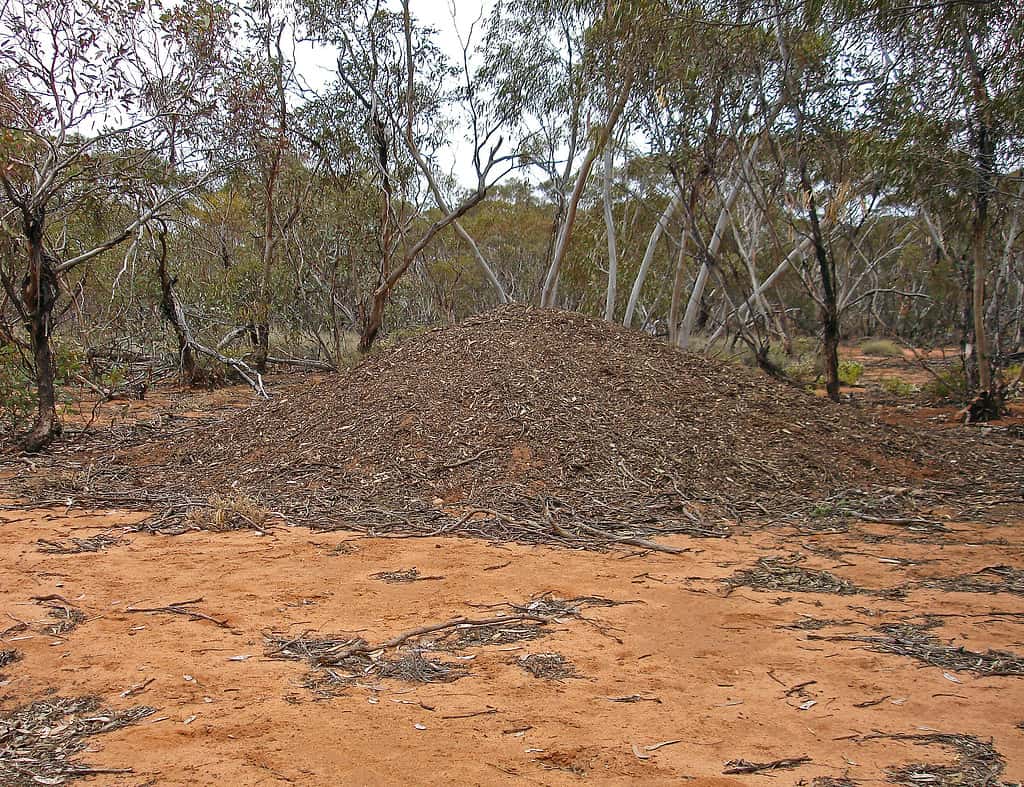
Malleefowl (Leipoa ocellata) build incredible nests that are enormous in size and weight.
©AGAMI stock/iStock via Getty Images
The malleefowl (Leipoa ocellata) is a large, ground-dwelling bird native to Australia. This species builds large and elaborate nests, which they carefully construct from mounds of soil and branches that can reach up to three feet in height. The male malleefowl builds the nest using mostly his beak and claws as he scrapes together leaves, twigs, sticks, and dirt into an impressive mound.
Once the mound is complete, the malleefowl carefully lines it with a layer of decomposing leaves and debris. This lining serves both to insulate and protect the eggs from predators and extreme temperatures. The nest also includes several chambers that they use for incubation, brooding, storing food for chicks, and providing shelter in case of rain or flash floods.
The male malleefowl will remain close to his nest throughout the breeding season to guard against potential threats such as foxes and feral cats. He will also tend to the mound, adding more debris and leaves as needed throughout the year, making them some of the longest-lasting structures built by any bird species.
In addition to being extremely durable, malleefowl nests are also incredibly efficient incubators for their eggs. The temperature within a well-constructed nest can reach up to 111°F (44°C), which is hotter than most other birds’ nests and helps speed up embryonic development.
3. African Jacana
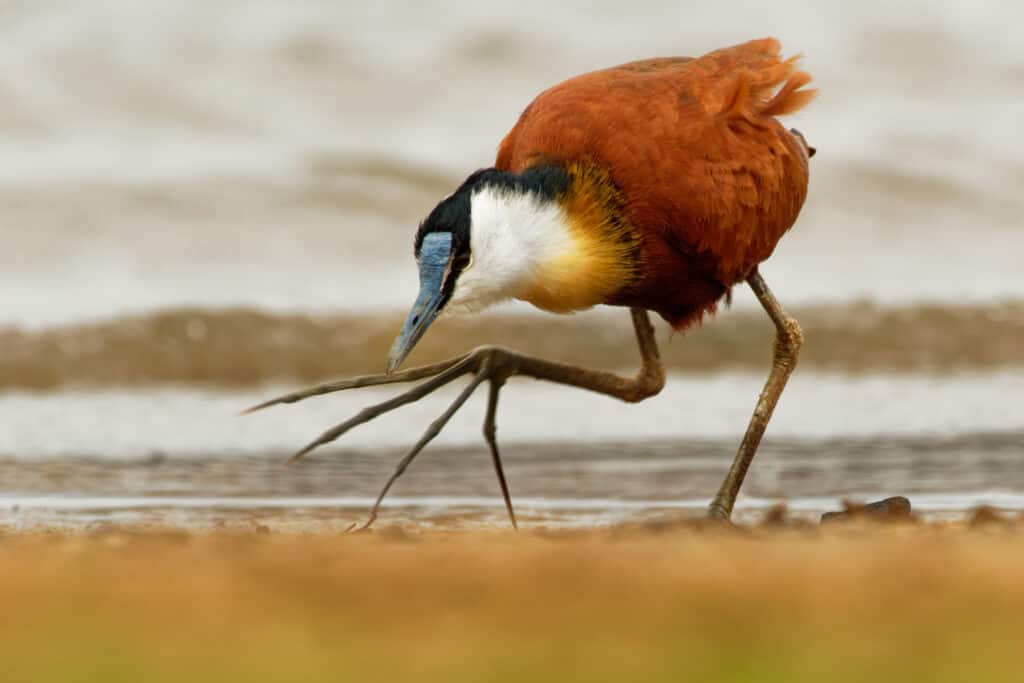
This lovely bird builds an incredible nest right on a lily pad floating in the water.
©Martin Pelanek/Shutterstock.com
The African Jacana bird is an incredible creature that lives in tropical wetlands. They have a unique feature: they build their nests on water! This is because they have long legs, allowing them to stand on floating vegetation.
The nests of the African Jacana are a marvel of engineering. They make the nests from floating vegetation, and they are strong enough to remain above the waterline. The birds can even add material to the nest as the water level rises.
These unique birds have adapted to their environment in remarkable ways. They are able to walk on lily pads and even swim if necessary. They also use their long beaks to grab food from the water.
The African Jacana is a fascinating species that is full of surprises. Their remarkable nests are just one example of their adaptability and ingenuity. They are a great example of how nature is able to find solutions to the challenges of their environment.
4. Cactus Ferruginous Pygmy Owl
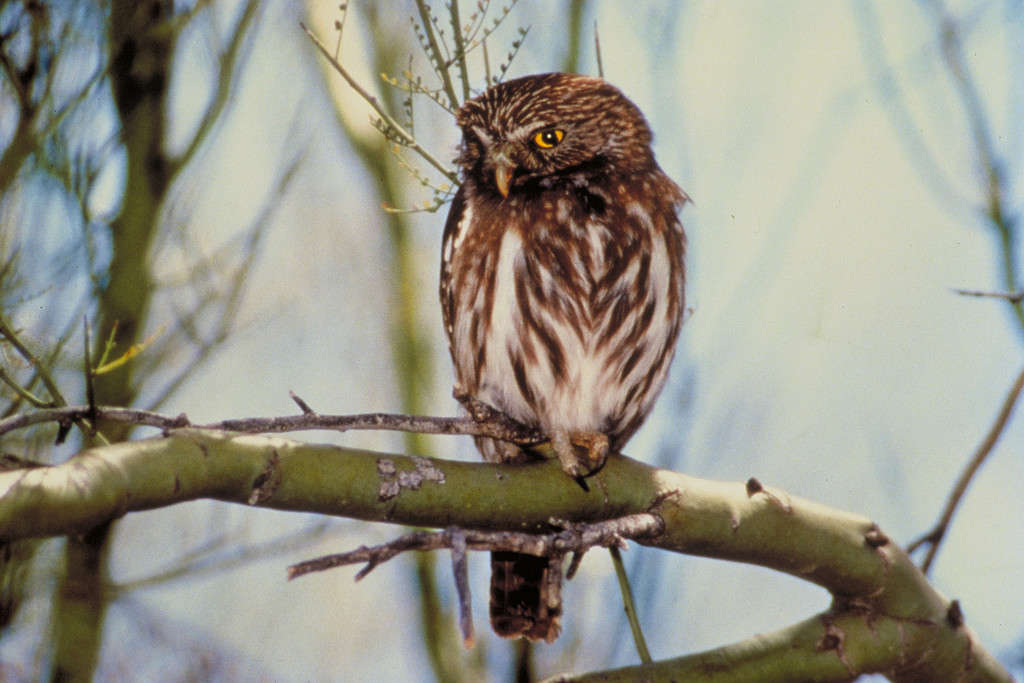
Glaucidium brasilianum cactorum, or cactus ferruginous pygmy owl, is an endangered species.
©Miles, Bob, Public domain, via Wikimedia Commons – Original / License
The Cactus Ferruginous Pygmy Owl is an incredible species of owl native to Arizona, New Mexico, and parts of Mexico. They build small-sized and unique nests right inside of a cactus. Doesn’t sound very comfortable, does it?
These owls build their nests in the arms of cacti, in existing holes in the spines of the cactus. They will use whatever material is available, from twigs and leaves to feathers and cloth. The female will lay between one and three eggs in the nest, and the male will help with the incubation and feeding of the young.
The owls are very well adapted to their desert environment, with their large eyes helping them to spot their prey from far away and their short wings allowing them to maneuver quickly.
The owls are a unique example of how species can adapt to their environment and make use of available resources. They provide an important ecological role as predators of small rodents, and their nests are a sight to behold. This is an endangered bird that needs our help to ensure its survival. With a little education and conservation, we can give these owls the home they need and deserve.
5. The Incredible Nests of the Sociable Weaver Bird
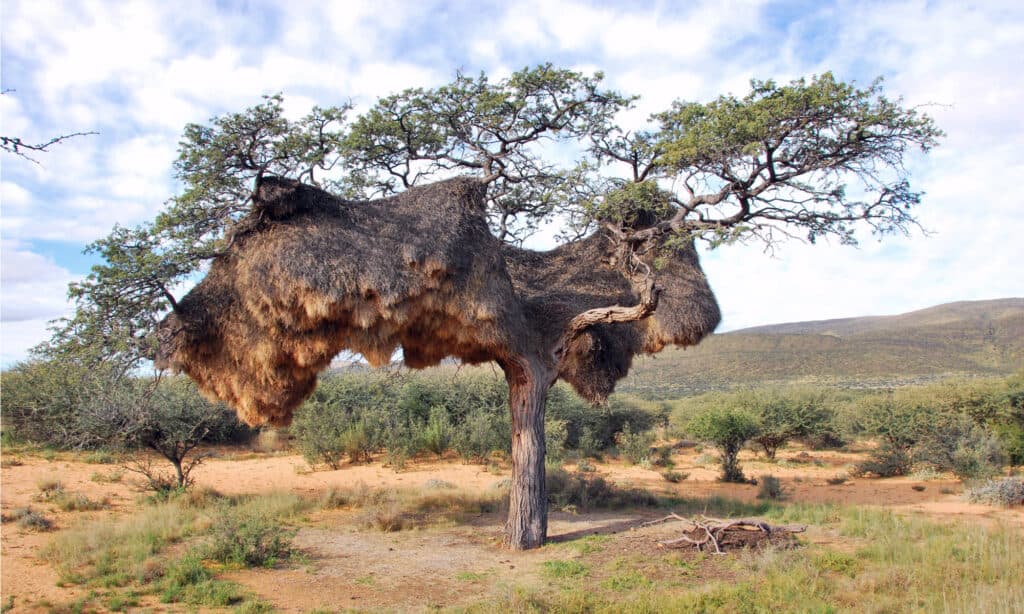
The Sociable Weaver builds an incredible nest that is like an apartment for birds.
©Michael Potter11/Shutterstock.com
The sociable weaver is an incredible species of bird native to parts of Africa. They have impressive nest-building skills and are famous for the sheer size of their nests. They are like an entire apartment complex for birds!
These birds build their nests communally, meaning that multiple birds will work together to construct one massive nest that can weigh up to 2,000 pounds! They build their nests using a variety of materials, such as grass, twigs, leaves, and feathers. The sociable weaver will also line their nests with animal fur and other soft materials.
They make their vast nests in the fork of a tree or in the branches of a sturdy bush. The sociable weaver will also build their nests on telephone poles, buildings, and even wind turbines!
The nests can be quite large, ranging anywhere from 3 to 9 feet in diameter. Inside the nest, the sociable weaver will create multiple chambers for nesting and roosting. They weave the walls of the nest out of grass, and they can be up to 2 inches thick.
Sociable weavers are highly social creatures and will often share the same nest with up to 50 of their own kind. They will also communicate with each other through a complex set of vocalizations.
6. Edible-Nest Swiftlet
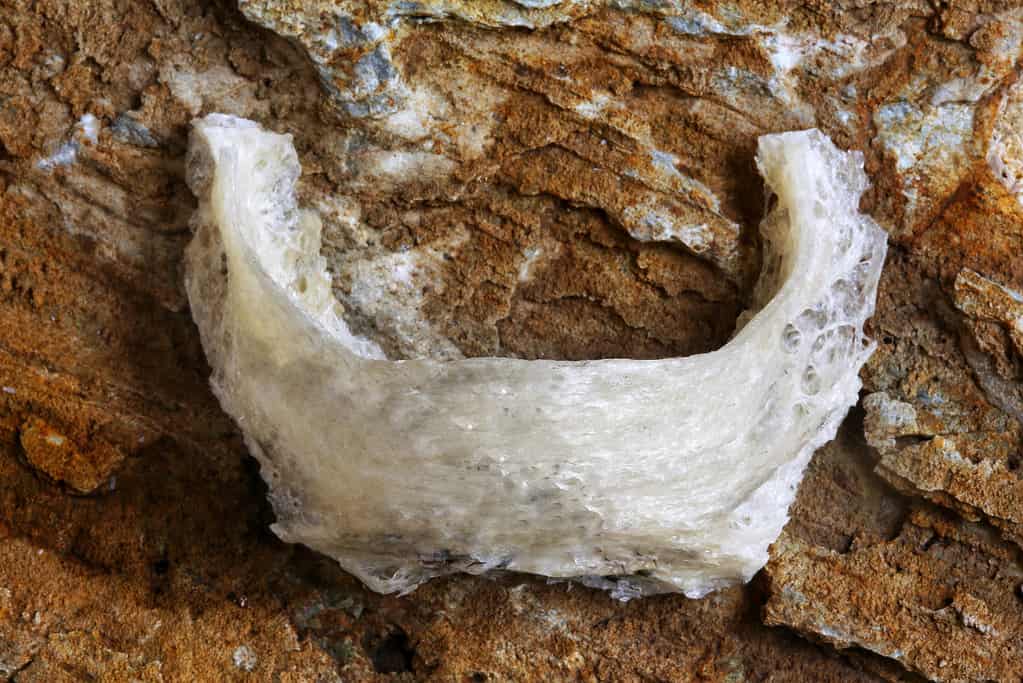
The nest of Edible-Nest Swiftlet is a delicacy in some countries.
©finchfocus/iStock via Getty Images
The edible-nest swiftlet is an incredible bird, building nests of extraordinary quality. These amazing nests are made from the swiftlet’s own saliva, a unique and highly sought-after material. The nests are thin and flimsy yet incredibly strong and durable — able to withstand harsh weather and predators.
The edible-nest swiftlet builds these nests in caves, crevices, and cliffs. They are surprisingly intricate, featuring interlocking strands that form intricate patterns. They are also packed with nutrition, providing a valuable source of minerals and proteins, according to some connoisseurs.
The edible-nest swiftlet’s nests are so sought after that people harvest them from the wild for culinary use. They must collect the nests while still fresh, as they quickly deteriorate in quality. Once collected, people use them in a variety of dishes, such as soups, stir-fries, and even desserts.
7. Bowerbirds and their Incredible Nests
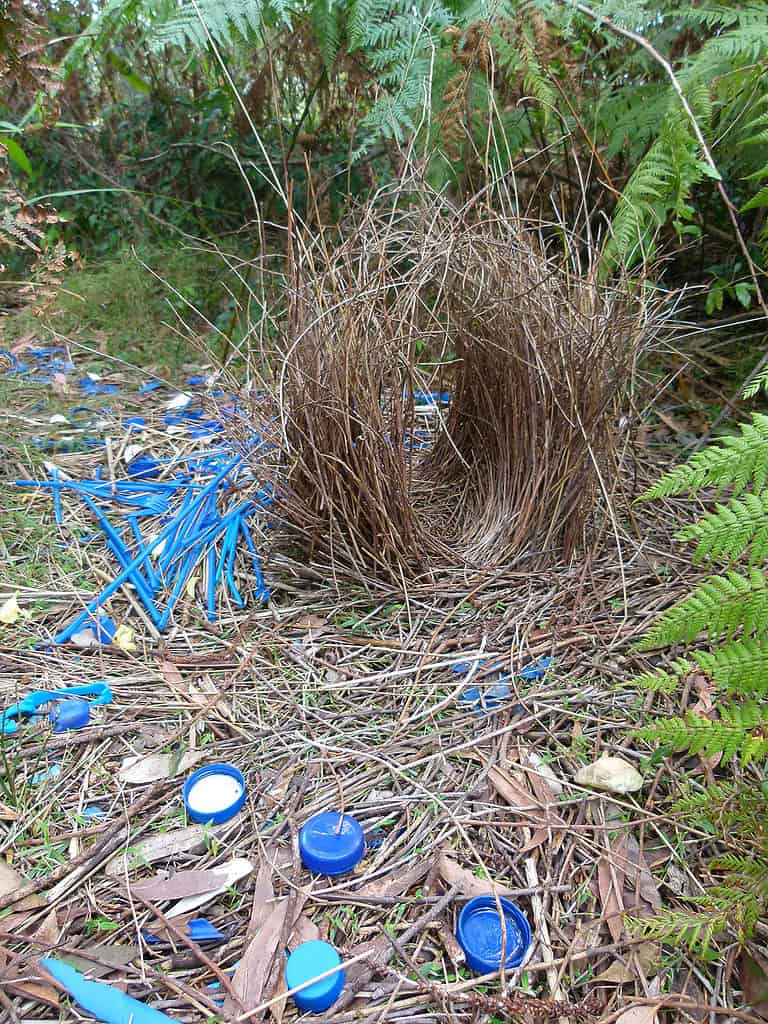
This bowerbird built an incredible nest! He must be trying to attract a mate who loves blue.
©iStock.com/skeat
The bowerbird is an incredible creature renowned for the intricate nests they construct. They build their nests with a masterful eye for detail and a great deal of skill, making them an impressive sight to behold.
The bowerbird builds its nest out of sticks, leaves, and other natural materials, creating a structure that blends perfectly into its environment. The nest is typically dome-shaped and may be up to six feet in diameter. Inside, the bowerbird lines the nest with feathers and other soft materials to provide a cozy home.
The bowerbird also decorates its nest with colorful objects, such as flowers, berries, and brightly-colored stones. This helps the bird to attract potential mates. To add a unique touch, the bowerbird will often arrange these items in patterns or create sculptures to adorn the entrance. Female bowerbirds spend a considerable amount of time inspecting the nest before mating to make sure it meets their expectations. High standards indeed!
8. Ovenbird
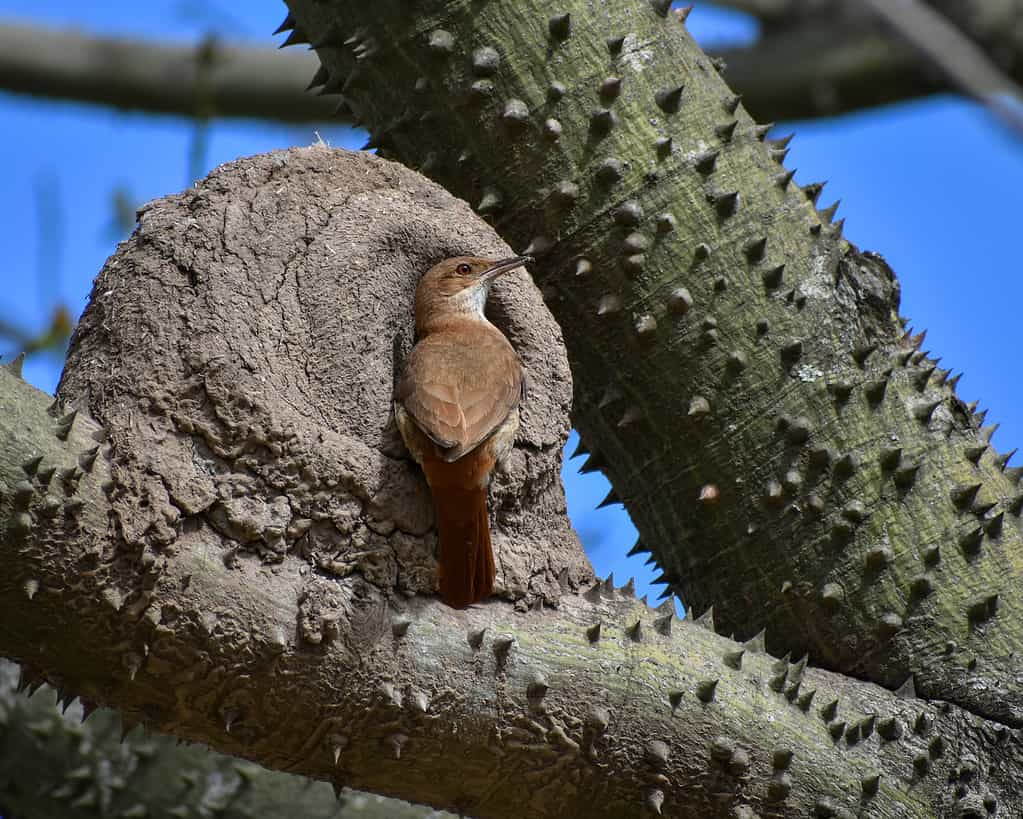
There are many different types of ovenbirds, and they all make a similarly shaped nest.
©Christian Peters/iStock via Getty Images
The Ovenbird (Seiurus aurocapilla) is a species of small migratory songbird native to North America. But what makes them truly special is their incredible nests.
These nests are built in the shape of a domed oven, with a two-inch entrance at the front. The ovenbird carefully constructs the nest from dead leaves, grasses, bark, and moss and lines it with soft, fine materials such as feathers.
The ovenbird is a diligent nest builder, and the construction process can take up to 18 days to complete. They put their nests on the ground in dense thickets and shrubs.
Once the bird finishes the nest, the female ovenbird lays three to five white eggs inside. She sits on the eggs to incubate them for 13 to 14 days. When the eggs hatch, both parents work together to feed the young. The nest remains active until the chicks fledge.
The ovenbird is an amazing species, and their incredible nests are a testament to their skill and hard work. They truly are a fascinating species of bird and one that deserves our admiration.
9. Penduline Tit
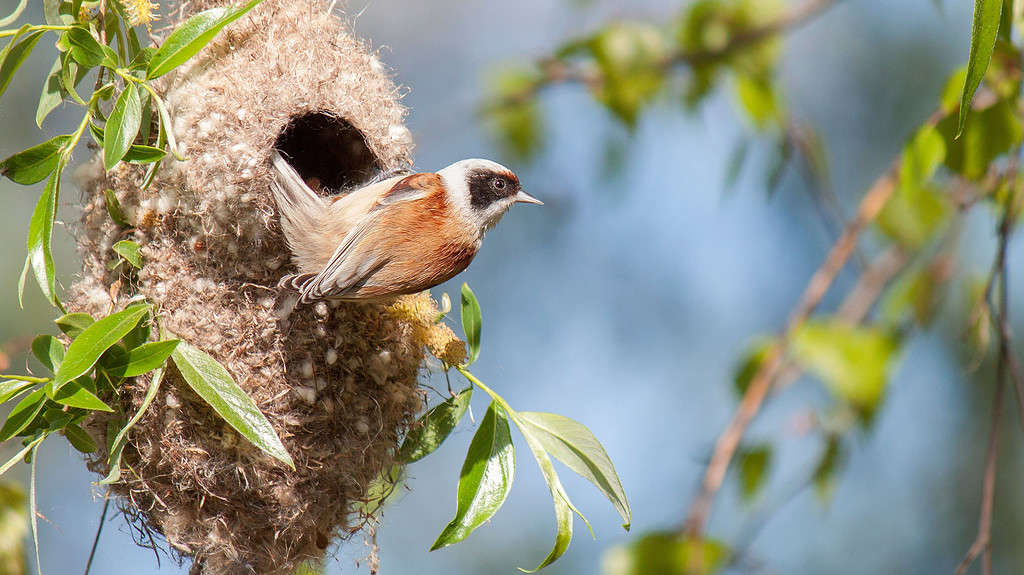
The incredible nest of the penduline tit is so soft that people use them for slippers!
©Wirestock/iStock via Getty Images
The penduline tit is a small bird native to Europe, Asia, and parts of Africa. They are most known for their incredible nests. They build their nests from string and feathers, and they hang like an ornamental pendulum from the tips of branches or reeds.
The penduline tit builds its nest with great skill and artistry. It starts by building a thin, flexible foundation of feathers woven together. Then, it adds a sturdy frame of dry grass and twigs. To finish it off, the bird adds a waterproof layer of spider silk and other materials.
The penduline tit’s nest is designed to be lightweight and weatherproof. It is also built to be well-ventilated and to provide protection from predators. The nest is so well-constructed that some birds can use it for years. And it isn’t only birds that love them. People of history have used Penduline tit tests as slippers and purses.
10. Bee-Eater
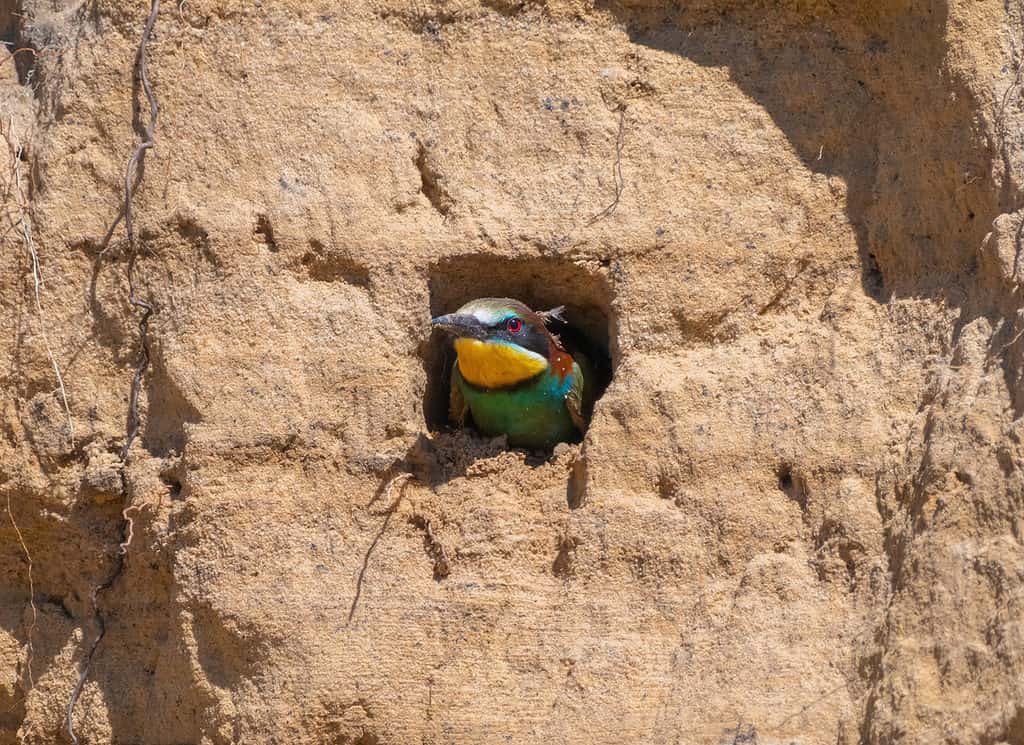
A bee-eater likes to build its nest on a sandy cliffside. You might see 500 of these nests in a row!
©iStock.com/Igor Klyakhin
The bee-eater (Meropidae)is a fascinating bird that builds some of the most incredible nests in nature. These nests are usually in sandy banks, burrows, or even on the sides of cliffs.
The bee-eater builds its nest using a mixture of mud and grass, which it molds into a tube-like shape. This tube usually extends up to 6 inches in length and has a diameter of about 2 inches.
Once the bird completes the nest, the bee-eater layers the inside with soft materials such as grass, feathers, and plant fibers. This creates a comfortable and insulated interior, perfect for the bird’s eggs.
The bee-eater also adds a unique touch to its nest by using a material called “bee glue,” which is made from the saliva of bees. This glue provides the nest with an extra layer of protection from predators. After they are finished with their nests, other birds, snakes, and bats move in and take advantage of these cozy homes.
11. Southern Masked Weaver and their Incredible Nests
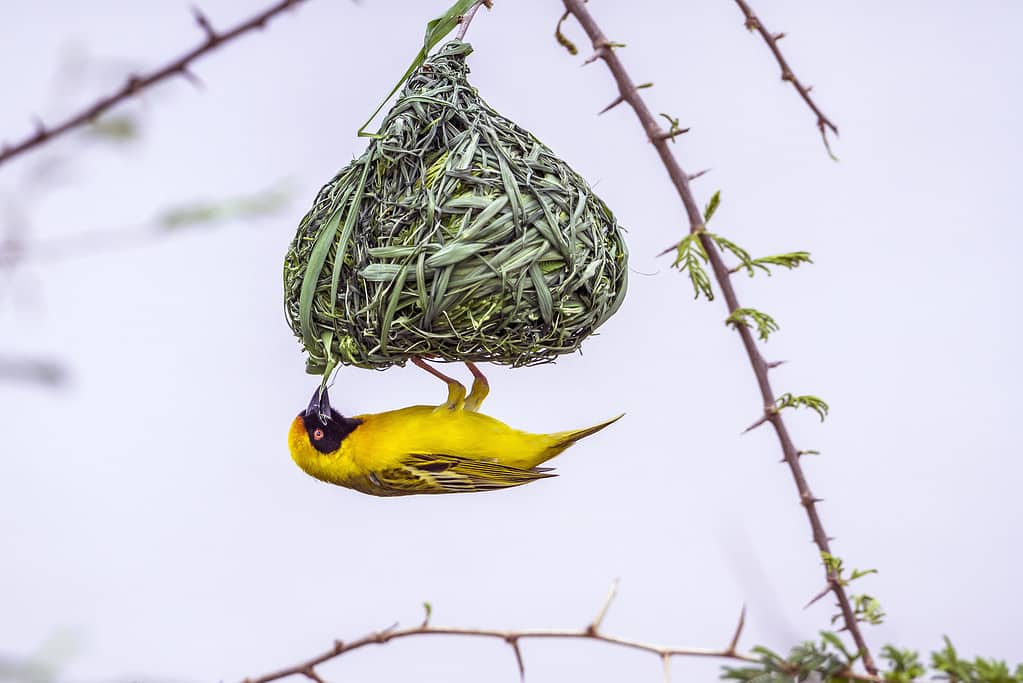
The incredible nest of the southern masked weaver hangs like a pendulum from a tree branch.
©Utopia_88/iStock via Getty Images
The Southern Masked Weaver (Ploceus velatus) is a species of bird native to sub-Saharan Africa. These birds are known for their incredible nest-building abilities. They create large, round, woven nests of grass and leaves that hang from tree branches or shrubs.
The nests are made up of an inner cup and an outer shell, both of which are made from grass and small twigs woven together. The inner cup is lined with feathers, wool, and other soft materials, making it comfortable and safe for the birds. The outer shell is made of the same materials but is much thicker and densely woven, providing protection from the elements and predators.
The Southern Masked Weavers are able to build their nests quickly and can often complete one in 10-14 hours. They usually build a new nest each year and can be found in both urban and rural areas throughout their range.
The photo featured at the top of this post is © Wirestock/iStock via Getty Images
Thank you for reading! Have some feedback for us? Contact the AZ Animals editorial team.







